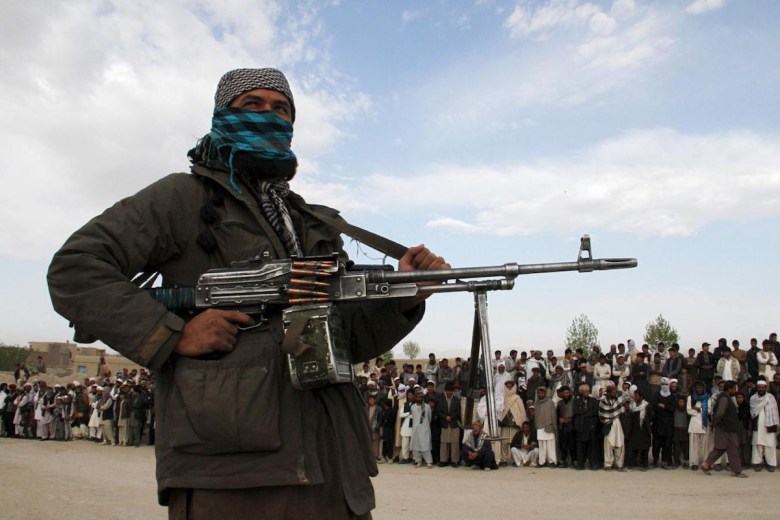Politics
Taliban Challenges Pakistan’s Influence Amid Border Clashes

Recent clashes along the Pakistan-Afghanistan border have escalated tensions significantly, marking a shift in the dynamics between Islamabad and the Taliban. In confrontations on October 11-12, 2023, the Taliban reportedly killed 58 Pakistani soldiers and seized multiple military posts, while Pakistan acknowledged the loss of 23 troops and claimed to have killed over 200 Taliban and affiliated fighters. Major border crossings at Torkham and Chaman were closed as the violence subsided on Sunday morning.
The clashes were reportedly triggered by a Pakistani airstrike in Kabul aimed at the Tehrik-e-Taliban Pakistan (TTP) leader, Noor Wali Mehsud. Although Islamabad has not confirmed details of this operation, the Taliban condemned it as a violation of Afghan sovereignty and vowed retaliation. This sequence of events illustrates Pakistan’s willingness to conduct strikes across the border when it perceives TTP leadership is being harbored in Afghanistan, while the Taliban has demonstrated a readiness to respond militarily.
The situation is underscored by a troubling statistic: the Centre for Research and Security Studies (CRSS) recorded 2,414 fatalities linked to militant violence in Pakistan within the first three quarters of 2023, nearly matching the full-year toll of 2,546 in 2022. The Armed Conflict Location & Event Data Project (ACLED) reported at least 600 TTP attacks or clashes with security forces in the same period. These trends validate Pakistan’s assertion that TTP sanctuaries across the border are intolerable, raising the political stakes for any restraint.
Changing Dynamics in Afghanistan-Pakistan Relations
For two decades, Pakistan’s military strategy aimed to leverage influence in Kabul to mitigate Indian presence and maintain stability along the border. However, following the Taliban’s takeover in 2021, this strategy has faltered. The current Afghan rulers prioritize nationalist legitimacy over dependency on Pakistan, rejecting the British-era Durand Line as an arbitrary border and resisting any unilateral policing efforts by Islamabad.
Recent fighting extended from Khyber Pakhtunkhwa to Balochistan, affecting areas such as Angoor Adda, Bajaur, Kurram, Dir, Chitral, and Bahram Chah. Pakistan’s military claimed to have neutralized several Taliban positions, while the Taliban asserted the success of their operations and warned of further reprisals if attacked again. The closure of border crossings serves as a strategic lever for Islamabad, imposing immediate costs on Afghan trade and transit.
The regional context complicates matters. During the clashes, the Taliban’s Foreign Minister, Amir Khan Muttaqi, was visiting New Delhi, highlighting Kabul’s outreach to regional powers. Saudi Arabia and Qatar have called for restraint, although these external pressures do little to alter the immediate military dynamics.
Future Implications for Regional Security
The recent violence indicates that Pakistan is recalibrating its approach to the Taliban. Following a failed truce with the TTP in 2022, attacks on security forces have surged, raising concerns about the potential for cross-border raids to provoke further TTP reprisals. This could entrap Islamabad in a cycle of retaliatory strikes without addressing the underlying issues of TTP sanctuaries.
Pakistan’s military strategy now appears to be evolving from seeking “strategic depth” to managing a security sinkhole that absorbs resources while exporting insecurity. Although an outright ground incursion seems unlikely, Islamabad may continue with targeted air or artillery strikes, temporary seizures of Taliban positions, and economic pressure through border closures.
The Taliban, facing economic challenges and an insurgency from the Islamic State-Khorasan Province (ISIS-K), cannot afford to appear weak in response to Pakistani military actions. Their calibrated responses along the border are aimed at demonstrating sovereignty and rallying nationalist support domestically, while avoiding a prolonged conflict they cannot sustain.
The broader implications for South Asia’s security landscape are significant. India will likely test a transactional relationship with Kabul without formal recognition, while Gulf states will continue to advocate for de-escalation to prevent disruptions to regional stability. China is focused on preventing instability from affecting the China-Pakistan Economic Corridor (CPEC), which is already vulnerable to insurgent attacks.
Pakistan faces difficult policy choices. A purely military approach risks escalating TTP violence at home, while diplomatic efforts have failed to deter cross-border activities. A balanced strategy may involve targeted pressure combined with pragmatic negotiations regarding specific TTP leaders, facilitated by third-party verification and incentives related to trade and humanitarian access.
Ultimately, the recent clashes have revealed that the Durand Line is not merely a geographical boundary but a complex political issue that shapes regional dynamics. For Pakistan, the concept of “strategic depth” has transformed into a precarious situation characterized by contested borders, a resurgent insurgency, and a neighbor willing to engage militarily to assert its sovereignty. The path forward may not involve sweeping agreements but rather incremental, verifiable steps that limit TTP operations while preventing the border from devolving into a permanent conflict zone.
-

 Business5 months ago
Business5 months agoKenvue Dismisses CEO Thibaut Mongon as Strategic Review Advances
-

 Lifestyle4 months ago
Lifestyle4 months agoHumanism Camp Engages 250 Youths in Summer Fest 2025
-

 Sports4 months ago
Sports4 months agoDe Minaur Triumphs at Washington Open After Thrilling Comeback
-

 Sports5 months ago
Sports5 months agoTupou and Daugunu Join First Nations Squad for Lions Clash
-

 Top Stories5 months ago
Top Stories5 months agoColombian Senator Miguel Uribe Shows Signs of Recovery After Attack
-

 World5 months ago
World5 months agoASEAN Gears Up for Historic Joint Meeting of Foreign and Economic Ministers
-

 Health4 months ago
Health4 months agoNew Study Challenges Assumptions About Aging and Inflammation
-

 Business5 months ago
Business5 months agoOil Prices Surge Following New EU Sanctions on Russia
-

 Entertainment4 months ago
Entertainment4 months agoDetaşe-Sabah Violin Ensemble Captivates at Gabala Music Festival
-

 Entertainment4 months ago
Entertainment4 months agoBaku Metro Extends Hours for Justin Timberlake Concert
-

 Top Stories5 months ago
Top Stories5 months agoRethinking Singapore’s F&B Regulations Amid Business Closures
-

 Business5 months ago
Business5 months agoU.S. House Approves Stablecoin Bill, Sends to Trump for Signature









